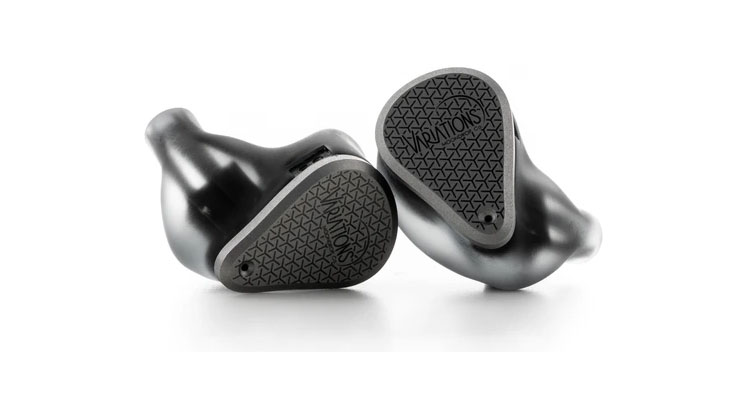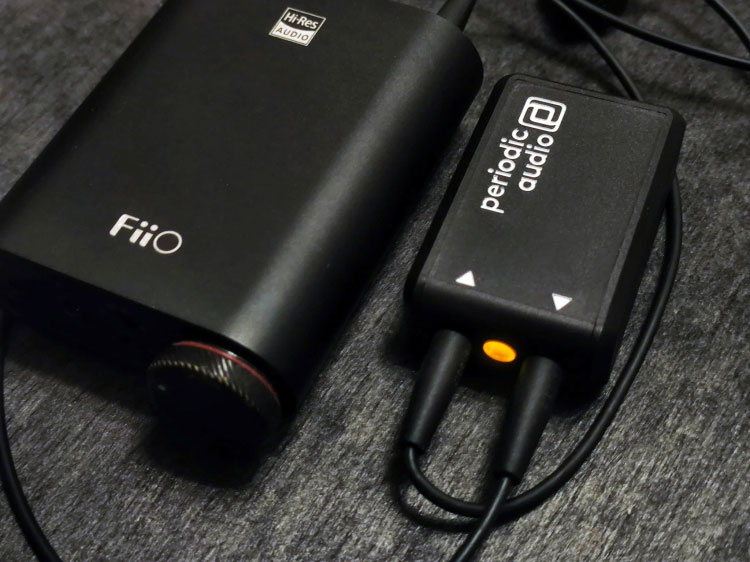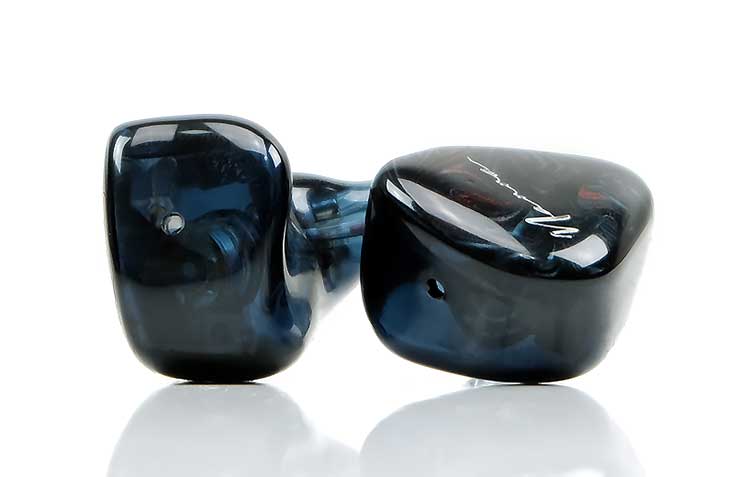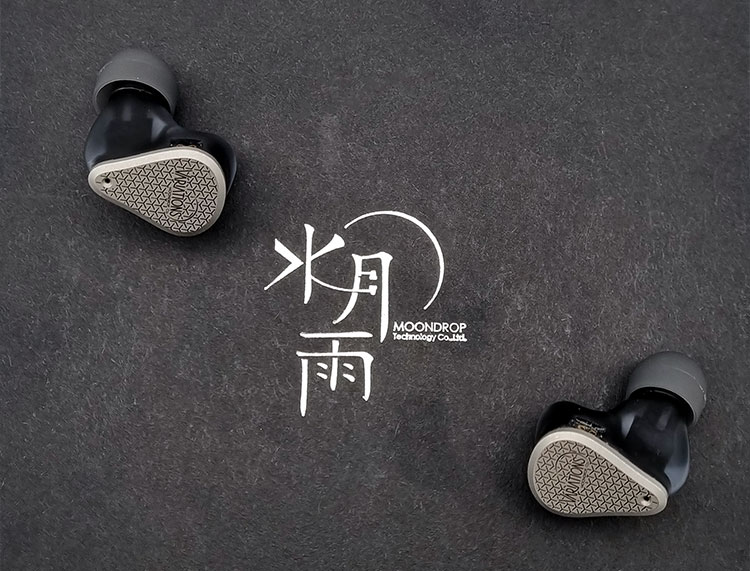Synergy
Efficiency
Thankfully, unlike previous permutations of tri-brid IEMs, the Variations’ is a fairly-forgiving IEM that does not require a gargantuan amount of power for optimal performance.
Nevertheless, EST drivers by Sonion are still more demanding than traditional balanced armatures or dynamic drivers. With a sensitivity rating of 118dB/Vrms@1kHz+/-15% at 15.2 ohms of resistance, the Variations’ would still sing under sub-optimal, pairings or power output.
Power
As per usual, the Variations was tested across multiple amplifiers, and DAPs to measure its aggregate performance across the board. As discussed earlier, the Variations are not a difficult IEM to drive, nor should they be treated lightly.
However, it still retains its core-FR response albeit with modest changes to its bass when paired with high-powered sources. Ideally, a low-impedance output source with copious amounts of power would exercise substantial control over the Variations’ dynamic driver, allowing for tighter, distortion-free bass response with less bleeding.
Pairings
This might come across as a copout for some, but it was rather difficult finding clear, distinct differences across the multitude of DAPs and amplifiers pairings. The Variations tend to cling onto their fundamental FR without straying too far away.
On warm sources such as the Periodic Audio Nickel, there is a slight bump up in the mid-bass frequencies, but it is not proportional enough for me to consider it a sharp alteration of its Moondrop’s intended FR for it.
However, during my testing sessions with the xDuoo X20, a notoriously thin-sounding DAP, the Variations’ mid-range soon became upper-mid focused, which detracted from its overall tonality. Everything sounded slightly more strident, and less timbre accurate. It is best to err on the side of caution if you’re thinking of pairing it with an overly bright source.
Select Comparisons
Kinera Nanna
$899
Technical
Internally, the Nanna shares more similarities than differences with the Moondrop Variations; both are tri-brid IEMs with similar internals, situated in a similar price bracket.
Featuring dual Sonion EST drivers, 1 Sonion Balanced Armature, and one 7mm dynamic driver, the Nanna is one balanced armature that shies away from being a one-for-one replica of the Nanna. Nevertheless, the Nanna is arguably one of the better representations of what a tri-brid IEM can achieve sonically.
Design
The Nanna is surprisingly small, despite its arsenal of 4 drivers per channel. Adopting the traditional stylings of acrylic-shelled IEMs, each shell features contrasting swirls of purple/burgundy and deep blacks.
The seam between the faceplate and the shells themselves are lacquered exceptionally well, giving it the illusion of a uni-body design. Aesthetically, both IEMs adopt variant design approaches; the Moondrop Variations opt for a utilitarian language, whereas the Kinera Nannas’ is reminiscent of expensive, marble tiles. Both IEMs use 2-pin connectors.
Cable-wise, the included 3.5mm OCC cables on the Nanna are flexible and supple, without retaining noticeable kinks or bends. Both the Variations and the Nanna share very similar cables. Nevertheless, the Variations’ edges out the Nanna with its novel inclusion of swappable balanced and un-balanced terminations.
Comparatively, the Nanna has a slight edge in terms of size, its smaller footprint more adaptable to smaller ear canals.
Performance
The Nanna’s treads the line between a mild V-shaped sound signature and a flat-to-neutral sound profile. Moreover, its mid-bass heavy slam leans towards the former tuning.
What is most impressive about the Nanna, is how it recreates the timbre of horn and brass instruments. The stridency that is characteristic of odd-harmonic heavy instruments is captured brilliantly, without the “hotness” or sibilance that gnaws away at the eardrums.
However, there is a slight veil that blankets the mid-to-upper midrange. This could be seen as either a pro or a con. The pros? The Nannas is more or a less a chameleon that remains forgiving enough across poorly mastered or bass-heavy tracks. The cons? Sometimes, the mid-range, the main frequency band essential to the human listening experience, lacks bite.
On the other hand, the Variations sounds more balanced and energetic across the entire FR band, albeit with a more truncated, conservative mid-bass slam. However, it doesn’t quite have that “magical touch” that the Nanna has with brass or string sections. Moreover, weirdly mastered tracks with a thin-like, wonky timbre sound even stranger without the Nanna’s veil.
Nostalgia Audio Benbulbin
$899
Technical
Nostalgia Audio is a boutique brand from Hong Kong that has chosen the safer route, doing away with the Sonion EST altogether. Manufactured in Poland, the Benbulbin houses 2 mid-range balanced armatures, 2 high-range balanced armatures, and an 11mm titanium-coated dynamic driver. This is the battle of the hybrid vs the tribrid.
Design
The Nostalgia Benbulbins are sizeable IEMs in comparison to the Variations. As a result, the Benbulbins are not as accommodating to users with smaller ear canals; an important consideration.
Unsurprisingly, it also relies upon the traditional acrylic mold that we’ve come to know and love. The Benbulbins’ epoxy-wood plate features random swirls of burgundy, and teal, its glossy lacquer giving it a beautiful luster.
There are no sharp bumps, odd protrusions, or misapplications of lacquer to be found on them. Again, both IEMs are simply difficult to compare aesthetically; it is an apples-v-oranges comparison that is contingent on your personal preferences.
The Benbulbin’s stock cables, the “Prelude”, are made of 26 AWG High-Purity, Silver-Plated Copper Litz, featuring 4-braids, Audio Note 6% Silver Solder, and a rhodium-plated 2.5mm balanced connector. Lastly, the included cables are made in Japan. Retailing for $165 USD on their own, the Prelude is a technically impressive cable.
However, a cable means nothing if it isn’t functional. Thankfully, the Prelude succeeds on this front. Each channel is incredibly flexible, each braid loosely braided to give it an “artisanal, hand-made” finish. The included rhodium 2.5mm balanced plug is incredibly sturdy, with a high-polished sheen.
Ideally, the Preludes should come equipped with interchangeable balanced and unbalanced connectors like the Variations. Apart from that, the Preludes are the clear winner in the cable category.
Performance
The Benbulbin’s are an unassailably, fun IEM. It is a toe-tapping, hip-shaking listen, no thanks to its cascading mid-bass slam, punctuated by a draggier, sub-bass rumble. While it does sound neutral across the board, especially with its hyper-airy treble, the Benbulbin’s still relatively full across its FR, albeit with heavy-handed alterations.
The Variations are a significant departure from the Benbulbins. Instead of an aggressively “fun” signature, the high-to-low end contrast is less obvious; the mid-range is the prominent frequency that is placed, front-and-center. Yet, the low end still retains its commanding presence, albeit with more restraints in comparison to the Benbulbins.
Our Verdict
The Variations mark an interesting evolution of Moondrop’s Blessing 2. The careful addition of Sonion’s dual EST drivers adds a unique tonality that the Blessing 2 simply lacks on its own.
In recent years, many competing brands are choosing to experiment with Sonion EST drivers, with many missteps along the way. While the Variations is by no means a perfect IEM, it is nevertheless, a welcomed addition to the Moondrop family.
Moondrop Variations Specifications
- Impedance: 15.2 ohms.
- Frequency Response Range: 9Hz-40kHz.
- Effective Frequency Response Range: 20Hz-20kHz.
- Sensitivity: 118dB/Vrms.
- THD+N: <1%@1kHz.
- High-quality acoustic performance with Perfect Tribrid Configuration.
- 10mm LCP Diaphragm Dynamic Driver.
- Sonion High-Performance Dual EST Drivers.
- Softears Customised Dual Midrange Balanced Armature Drivers.
- Moondrop’s VDSF Target Response Tuning.
- Low Non-Linear Distortion.
- Highly-Consistent Full-Frequency Phase Response.
- Medical-Resin 3D Printed filter cavity.
- Sand-blasted Stainless Steel Facepanel.
- 6N High-Purity Single Crystal Copper Cable.
- Replaceable Termination Plugs.
- Standard 0.78mm Two-Pin Connectors.






